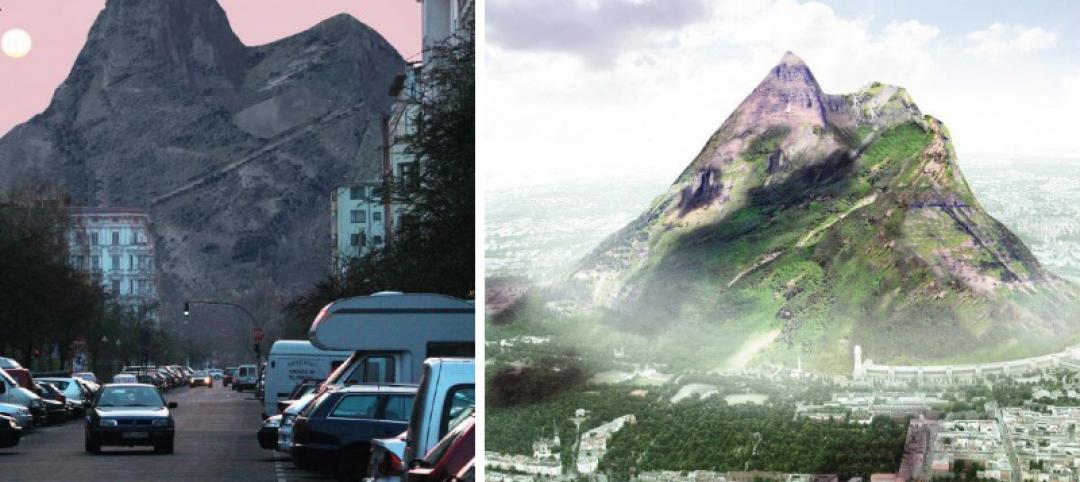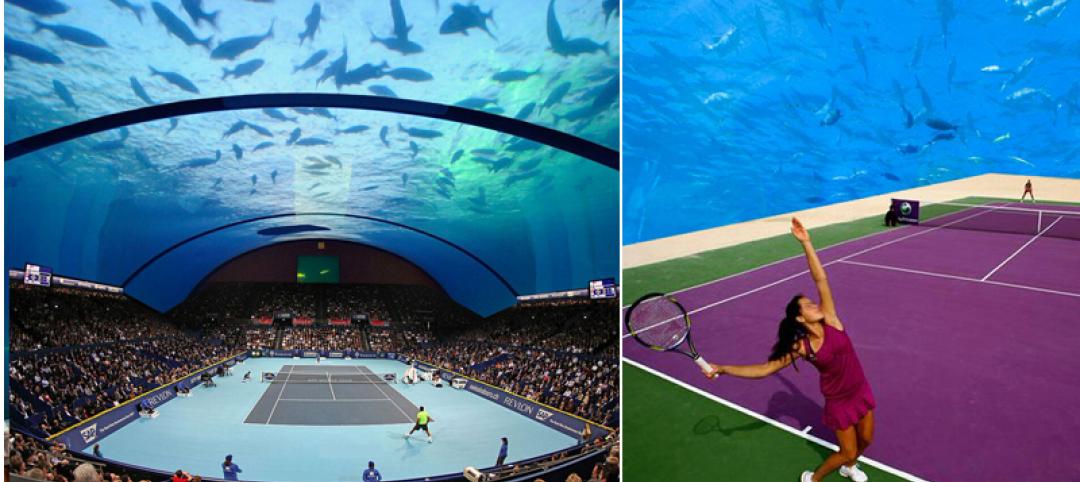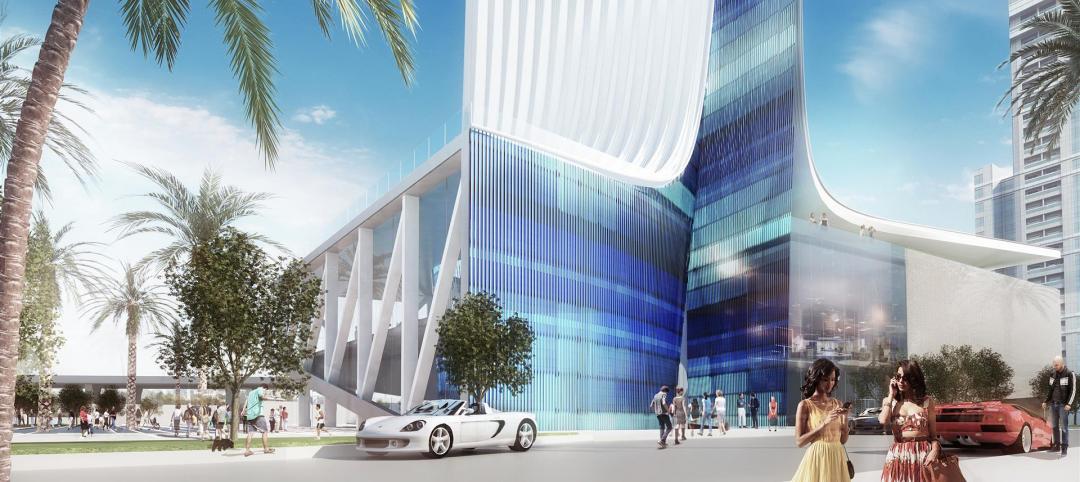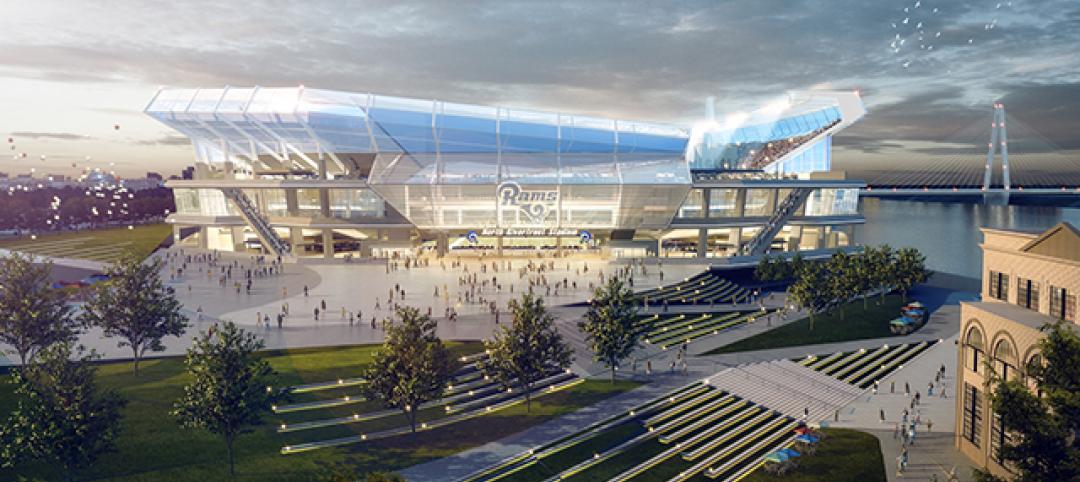As the 2022 NFL season kicks off, one of the league’s original franchises is solidifying plans to leave its landmark lakefront stadium for a multi-billion-dollar mixed-use stadium district in northwest suburban Arlington Heights, Ill.
The Chicago Bears, on Tuesday, released renderings that depict a preliminary master plan for the 326-acre property, the former home of the Arlington International Racecourse. The team, last September, signed a $197.2 million agreement to purchase the land from Churchill Downs Inc. The Bears have yet to close on the property.
The prelim master plan, by architecture firm Hart Howerton, features a 206-acre transit-oriented entertainment and mixed-use district situated on the southeast half of the property, with the 120-acre stadium district on the west side. Water features, tree-lined walking paths, and greenery separate the two districts. Initial plans call for multifamily residential, restaurants, bars, a hotel, and commercial/retail components, with walking access to the stadium and the existing Metra Arlington Park train station.
In an open letter to the public posted on Tuesday, Bears officials unveiled their vision for the project: “a multi-purpose entertainment district anchored by a new, best-in-class enclosed stadium, providing Chicagoland with a new home worthy of hosting global events such as the Super Bowl, College Football Playoffs, and Final Four.” In the same letter, the team noted that the property deal is not yet a sure thing, and that “there are conditions that must be met in order to be in a position to close,” and: “If we do close on the property, it does not guarantee we will develop it.”

In the meantime, the team has cut off discussions with the city of Chicago related to renovating Soldier Field, even as city officials push for a possible deal to keep the Bears in Chicago. In July, the city, in partnership with a development team, released three design concepts for upgrading Soldier Field, including a domed stadium plan that would cost $2 billion.
The Bears, in the open letter, stated that while under contract with Churchill Downs, the team would not explore alternative stadium sites or opportunities. In short, while a deal is not 100% certain, it appears more likely that the Bears will be packing their bags for Arlington Heights within the next decade.
Why would the Chicago Bears leave Chicago?
There are several motivations for leaving Chicago. For one, the Bears do not own Soldier Field; the city does. Under the current Soldier Field contract, which runs through 2033, the franchise must share sizable revenues with the city and must rely on the Chicago Park District for maintenance of the property. Field conditions have been an ongoing issue for the team and NFL league officials, as have event schedule conflicts, parking capacity, accessibility, the overall fan experience.
Secondly, with a capacity of just 61,500, Soldier Field is the smallest stadium in the NFL, with nearly 20,000 fewer seats than Dallas Cowboys’ AT&T Stadium and 21,000 fewer seats than MetLife Stadium, home of the New York Giants and Jets.
ALSO SEE: Chicago proposes three options for Soldier Field renovation including domed stadium
The biggest motivation, perhaps, is the unrealized revenue potential for one of the world’s most valuable sports franchises ($5.8 billion, No. 6 on Forbes’ World’s 50 Most Valuable Sports Teams 2022). The Bears have watched other sports organizations—Atlanta Braves, Chicago Cubs, Green Bay Packers, Milwaukee Bucks, to name a few—cash in on private and public-private sports-anchored entertainment districts that draw year-round crowds and create a more diverse revenue model.

Who’s going to pay for the Chicago Bears stadium?
According to the Bears, its Arlington Heights plan would not call for public funding for direct stadium structure construction. The organization left open the possibility of seeking public funds to assist with the development of the other portions of the development.
The team believes that any public investment is money well spent given the short-term and ongoing benefit to the Chicagoland community, Cook County, and the state of Illinois. The Bears stated: “Construction of the proposed project is projected to create more than 48,000 jobs, result in $9.4 billion in economic impact for Chicagoland, and provide $3.9 billion in labor income to workers across the region, while the completed project will create more than 9,750 long-term jobs, result in $1.4 billion in annual economic impact for Chicagoland and provide $601 million in annual labor income to workers across Chicagoland. We also anticipate that the development will generate $16 million in annual tax revenue in addition to property taxes for Arlington Heights, $9.8 million for Cook County, and $51.3 million for the State of Illinois.”
Related Stories
Sports and Recreational Facilities | Jul 23, 2015
Japan announces new plan for Olympic Stadium
The country moves on from Zaha Hadid Architects, creators of the original stadium design scrapped last week.
Sports and Recreational Facilities | Jul 17, 2015
Japan scraps Zaha Hadid's Tokyo Olympic Stadium project
The rising price tag was one of the downfalls of the 70-meter-tall, 290,000-sm stadium. In 2014, the cost of the project was 163 billion yen, but that rose to 252 billion yen this year.
Cultural Facilities | Jul 13, 2015
German architect proposes construction of mountain near Berlin
The architect wants to create the world’s largest man-made mountain, at 3,280 feet.
Sports and Recreational Facilities | May 14, 2015
Guy Holloway proposes multi-level urban sports park for skaters
The facility will include a rock climbing wall and boxing space.
Cultural Facilities | May 13, 2015
MVRDV selected to design High Line-inspired park in Seoul
The garden will be organized as a library of plants, which will make the park easier to navigate.
Sports and Recreational Facilities | May 5, 2015
Architect scouts investors for underwater tennis court
While off duty, the tennis complex could double as exhibition space.
Mixed-Use | May 5, 2015
Miami ‘innovation district’ will have 6.5 million sf of dense, walkable space
Designing a neighborhood from the ground-up, developers aim to create a dense, walkable district that fulfills what is lacking from Miami’s current auto-dependent layout.
Hotel Facilities | Apr 30, 2015
Atlanta Braves partner with Omni Hotels & Resorts to build hotel near new Suntrust Park
The Omni Atlanta Northwest Hotel will feature 16 floors with 260 guest rooms and suites, rooftop hospitality suites, 12,500 sf of meeting space, a signature restaurant, and an elevated pool deck and bar overlooking the plaza and ballpark.
Sports and Recreational Facilities | Apr 27, 2015
Qatar unveils Al Rayyan, fifth World Cup stadium
After the World Cup, part of the stadium’s seating will be donated to other countries.
Sports and Recreational Facilities | Apr 24, 2015
HOK unveils renderings and video of new St. Louis NFL stadium
Retractable seating in the corners will allow the stadium to be used for FIFA or Major League Soccer matches, as it expands the field to a FIFA-regulated 120 yards long and 75 yards wide.

















